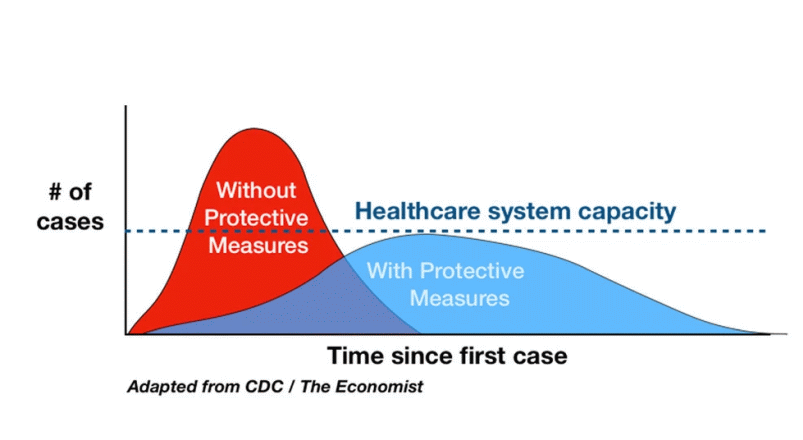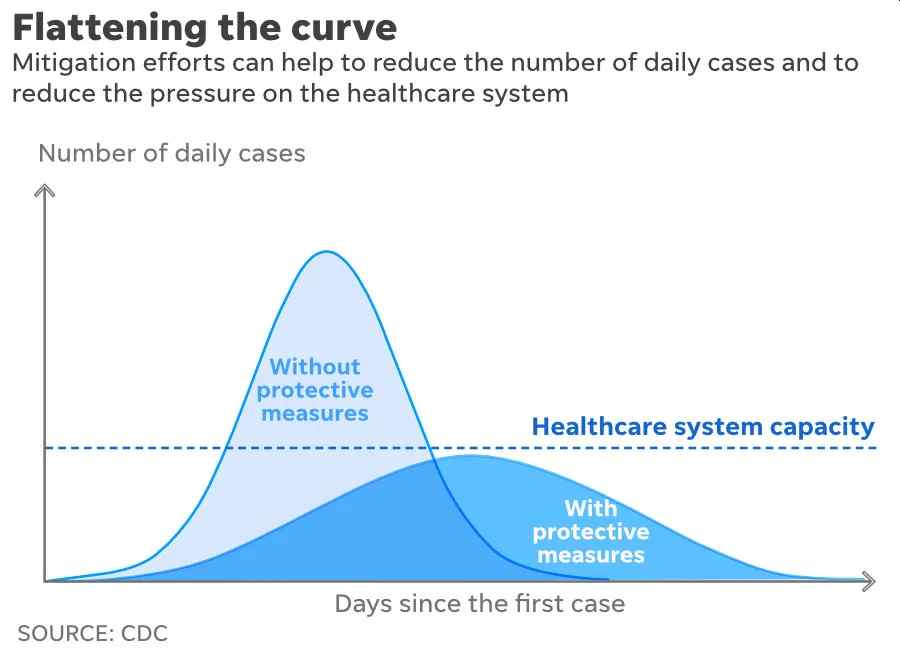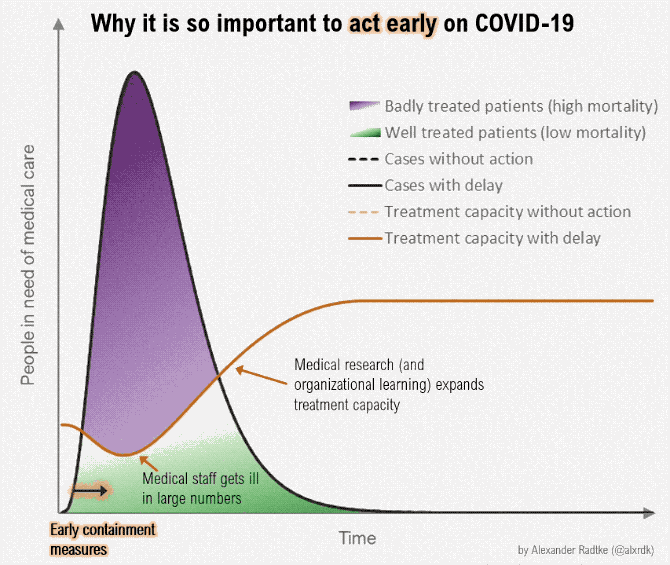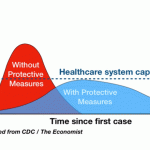‘Flatten The Curve’ may be the best way to slow the spread of coronavirus, expert says

With coronavirus becoming a global pandemic, people are looking for information and ways to better protect themselves against COVID-19. However, top experts are saying we might not be able to stop the spread, but we can slow it down. Without containment and mitigation, the virus can possibly infect more people than our healthcare system can handle. The question is, what about if we are able to slow the spread of the virus so there are fewer people in need of care that will not overwhelm our healthcare system? That’s exactly what the experts are aiming to do. The
Health professionals are calling for a new measure to contain the virus called “Flatten the curve.” Originally developed by CDC, the idea refers to an epidemic curve, a statistical chart commonly used to visualize when and at what speed new cases are reported, could be flattened, rather than being allowed to rise exponentially. The chart explains why slowing the spread of the infection is nearly as important as stopping it.
By flattening the coronavirus epidemic (infection) curve, essentially slow down the spread of the virus, the action will go a long way to help our fragile healthcare systems from becoming overwhelmed by new patients who become sick with coronavirus infections. In addition, mitigation efforts and measures like preventing community spreads and social distancing may help reduce the disease caseload on any given date, and can keep the healthcare system from becoming overwhelmed.
The graphic was made by journalist Rosamund Pearce for The Economist, based on a graphic that had appeared in a C.D.C. paper titled “Community Mitigation Guidelines to Prevent Pandemic Influenza,” showed what Dr. Harris called two epi curves. One had a steep peak indicating a surge of coronavirus outbreak in the near term; the other had a flatter slope, indicating a more gradual rate of infection over a longer period of time.
The lower curve ultimately results in fewer people infected and fewer deaths. “What we need to do is flatten that down,” said Dr. Anthony Fauci, director of the National Institute of Allergy and Infectious Diseases, during the coronavirus task force briefing at the White House on Tuesday evening. “You do that with trying to interfere with the natural flow of the outbreak.”

Below is the animated version of the CDC graphic.





